[Jennifer explores the craft and care put into a profoundly personal show, and explains some of the traditions that influence the works. — the Artblog editors]
In a video now on view at the Fabric Workshop and Museum, we can see how the artist Kazumi Tanaka crushes the green leaves from an indigo plant in her hand. Within seconds, the leaves oxidize and dye her palm, fingers, and fingernails dark blue. It’s like a magic trick. This video, a 39-minute loop titled “Mother and Child Reunion,” is just one piece in the larger exhibition Kazumi Tanaka: Mother and Child Reunion, showing through Nov. 9.
Traditions and techniques
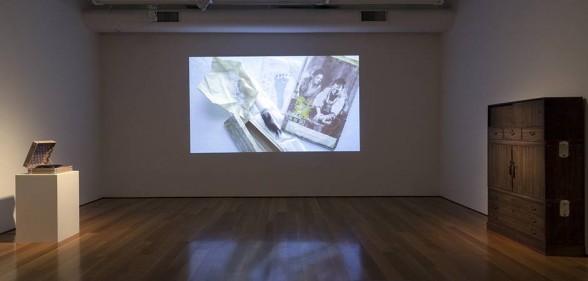
The video describes Tanaka’s journey to investigate and learn about indigo-dying, shibori-folding, and other traditional Japanese techniques. We follow the artist as she travels and researches in order to prepare for this exhibition. Two additional works occupy the same gallery in which the video plays. There is a dresser, or tansu, which belonged to the artist’s mother and in which is stored, in a hidden drawer, Tanaka’s saved umbilical cord, baby footprint, and clipping of hair. These three elements are primary and repeating themes in this exhibition, and serve as a symbolic touchstone for all other elements here. Across the room on a plinth is an old-fashioned record player made by the artist, playing a record constructed from hair and shellac. Spinning silently, this record seems to offer a meditation on Tanaka’s embodied works of art.
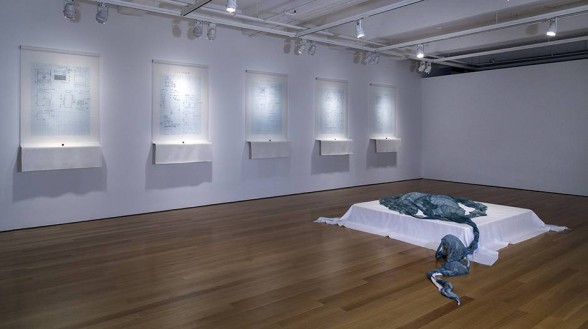
Familial connections
The 14 pieces in Mother and Child Reunion are deeply personal and exquisitely made. At an artist’s talk on Oct. 2, Tanaka explained that her mother’s recent stroke and near-death experience shaped much of what we see here, as did the opportunity to collaborate with the Fabric Workshop. Nami Yamamoto, Project Coordinator and Construction Technician at the Fabric Workshop, along with numerous studio staff, worked with Tanaka in order to produce “Flow,” the Japanese indigo-dyed, shibori-folded fabric that is undoubtedly the central work of the exhibition.
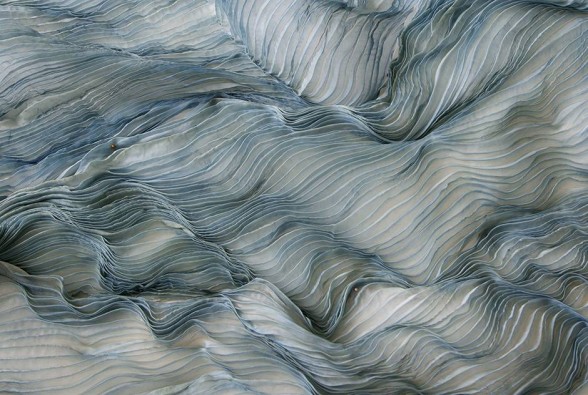
“Flow” consists of five segments of silk organza arranged in the center of the second gallery like a low mountain, or a stream, or some other rippled, organic topography. The undulating fabric ends in a tight, rope-like segment of an unfolded shibori twist that falls and trails off the raised support on which “Flow” rests. If this portion of the work is like an umbilical cord, as the artist suggests, then “Flow” may also be the placenta and life-giving force for the rest of the exhibition. This work represents Tanaka’s own umbilical cord, hidden in her mother’s tansu, and the Japanese tradition of mothers passing on to their children this saved body part from infancy. The traditional indigo dye and shibori folds used to create “Flow” are a result of the artist’s research with international experts such as Hiroyuki Shindo and Rowland Ricketts, both of whom we meet in the video.
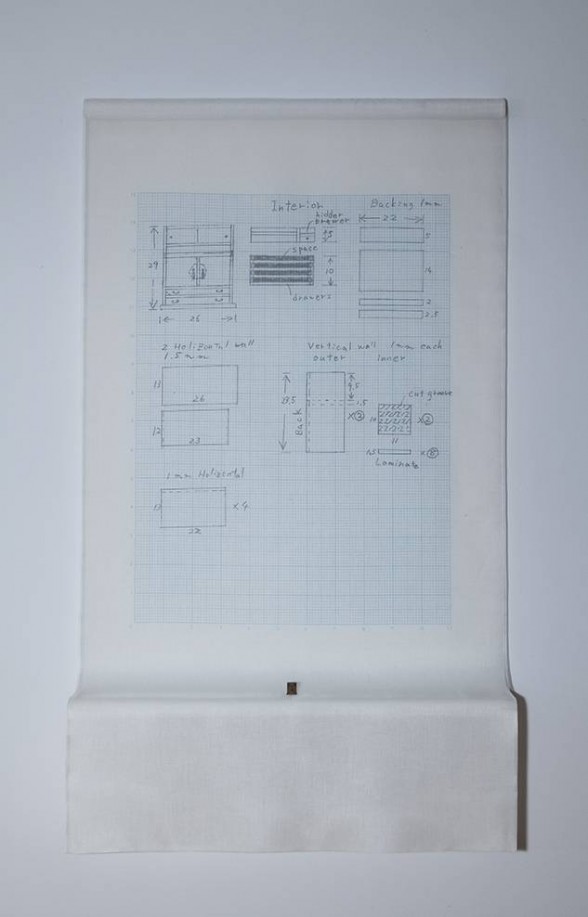
Around the outer walls of this gallery are 10 tiny examples of handmade furniture, each displayed on a shelf in front of transparent fabric printed with the building plan for its corresponding furniture piece. Each of these is titled “Conception”–yet another reference to motherhood and lineage. These works, which contain striking shifts in scale between each outsized plan and the diminutive furniture that it describes, celebrate childhood memory and Japanese tansu traditions. The tiny tansu appear to be no more than an inch or so high, smaller even than dollhouse furniture. Tanaka explained that they are similar in scale to the toys that come as surprise gifts in some candies. One example is a micro version of her mother’s tansu , complete with what may be the world’s tiniest hidden drawer. Amazingly, these pieces are fully functional; the video shows magnified scenes of delicate tweezers and other tools opening and closing the doors and drawers.
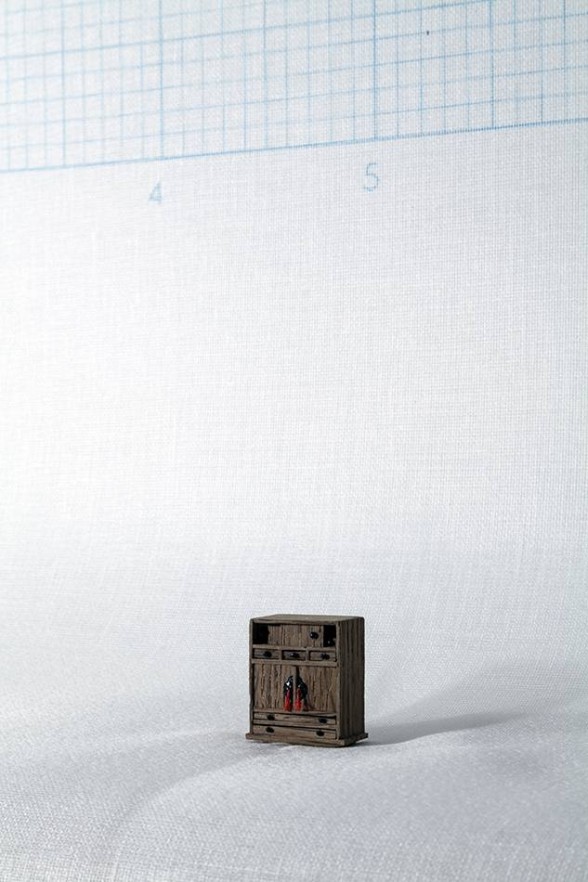
Each of the works in Mother and Child Reunion becomes exemplary for the way the artist merges and balances traditional craft techniques and personal and familial traditions. The technical and the emotional merge here in ways that let us get to know this artist’s work, as well as her life, in a deeply satisfying way .
Kazumi Tanaka: Mother and Child Reunion is on view at The Fabric Workshop and Museum, 1214 Arch St., Philadelphia, PA through Nov. 9, 2014.









